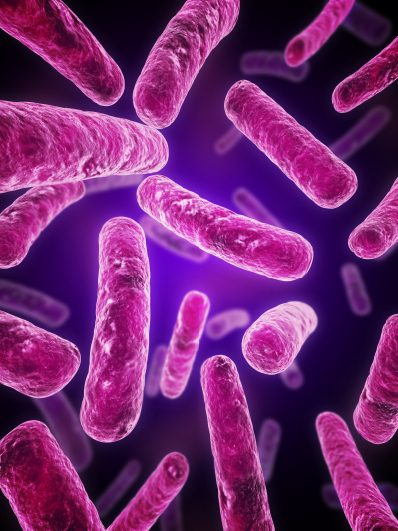
Vern Schramm, Ph.D., has no shortage of enzymes to target with transition-state analogues. Current priorities for the Einstein professor of biochemistry include inhibiting an enzyme that may be linked to Alzheimer’s disease and another that multidrug-resistant bacteria use to chew up antibiotics.
Epinephrine (also known as adrenaline) is a hormone and neurotransmitter best known for rousing the “fight or flight” response. It influences respiration and blood pressure. Excess levels may lead to hypertension, and it has even been suggested as a link to Alzheimer’s disease. Scientists have long sought ways to curb epinephrine’s production.
“The enzyme PNMT catalyzes the conversion of norepinephrine to epinephrine,” Vern says. “Major pharmaceutical companies have targeted PNMT as a way to lower epinephrine levels, but they’ve never developed inhibitors powerful enough to do the job.”
Vern hopes to succeed where Big Pharma has failed. He and his colleagues have solved PNMT’s transition state and are now synthesizing transition-state analogues to inhibit the enzyme. By suppressing epinephrine levels, those PNMT inhibitors may help in regulating blood pressure and reducing the risk for Alzheimer’s disease.
Bacteria that become resistant to multiple antibiotics have earned the name “superbugs. ” Many are resistant to penicillin, methicillin, and other members of the widely used beta lactam group of antibiotics, so named because their structures contain a beta lactam ring.
Several bacterial species have developed resistance to beta lactams by evolving beta-lactamase enzymes, which thwart the antibiotics by dissolving these rings. Bacteria that are especially notorious for their antibiotic resistance—and for the illnesses and deaths they cause—produce a beta-lactamase enzyme called NDM-1.
The NDM-1 enzyme was first detected in a Swedish man infected with a bacterium called Klebsiella pneumoniae. He had returned home after being hospitalized in India, where NDM-1-related infections (caused by Klebsiella as well as E. coli) were prevalent. Such infections have spread rapidly over the past decade and have now been detected worldwide. Vern and his colleagues are responding to the urgent need for NDM-1 inhibitors.
“We’re working now to solve NDM-1’s transition state, and we hope within the next few years to develop drugs to target the enzyme,” Vern says, noting that such an inhibitor would be administered to infected patients in combination with an antibiotic.
—Larry Katzenstein
 At top: Postdoctoral fellow Niush Mahmoodi purifies a transition-state analogue candidate; in the background is research program trainee Marnie Kotlyer. Above, E. coli bacteria.
At top: Postdoctoral fellow Niush Mahmoodi purifies a transition-state analogue candidate; in the background is research program trainee Marnie Kotlyer. Above, E. coli bacteria.